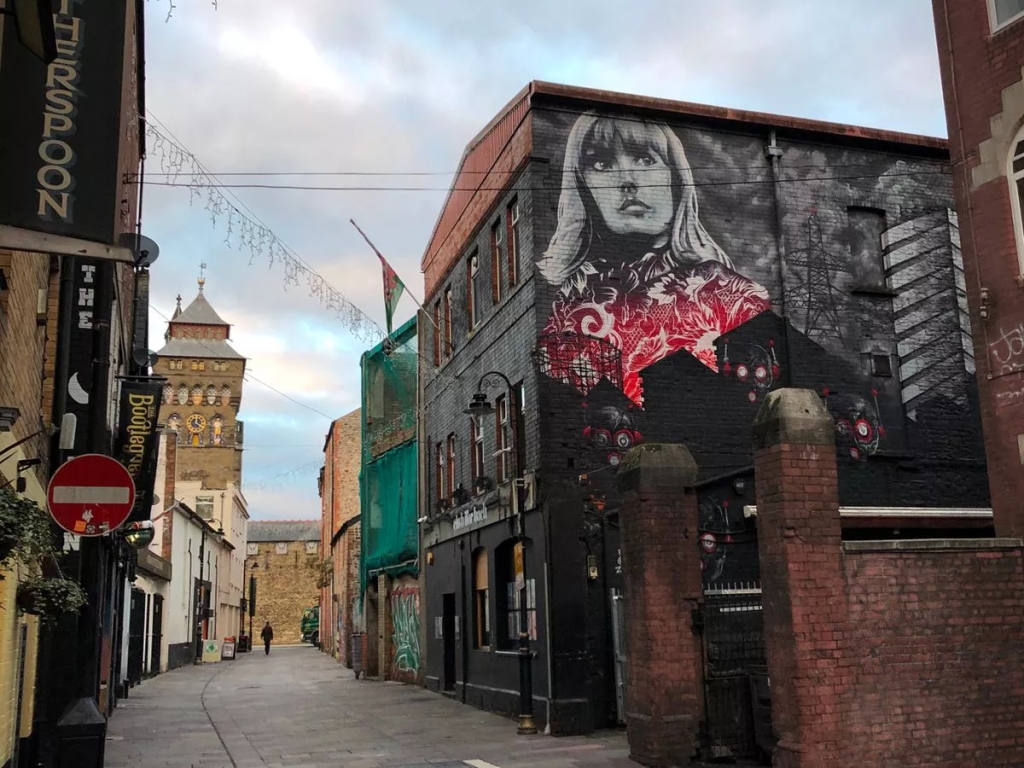Grassroots venues in Cardiff are a hub of creative culture, often relying on the funding provided by both government and independent entities to sustain. Cardiff being considered a creative cluster, the Welsh Government boasts the music industries success through its various funding strategies, stressing the importance of bilingualism. March 2015 saw Arts Wales’ international strategy to promote this bilingualism improving cultural sustainability as the Welsh language is respected worldwide for its resilience, and bilingualism has more in common with a global market. These values are enshrined within the Well-being of Future Generations Act however is government funding enough to nurture Welsh language music, while grassroots venues already struggle to sustain, and music industry is primarily situated in Cardiff?

Most notably, Clwb Ifor Bach for 40 years has promoted Welsh artists, supporting bilingualism, culture, and creative prosperity at its core. While now responsible for various other cultural productions within the music sector, including Swn festival and Clwb Music, Clwb Ifor Bach is the only venue of its kind in Cardiff, securing funding from Cardiff Council, Wales Centre of Art and the Heritage Trust. As a grassroots venue they are continually challenged by unsteady income and rely on the advocacy of cultural experience to thrive. 2017 saw Wombany Street (home to Clwb and several other grassroots venues) struggle to compete with attempts at commercial expansion by Wetherspoons, saved by the public’s belief in the importance of the street to Cardiff’s creative industries. Entrenched in subculture, grassroots venues in Cardiff, while actively valued and predominately located here, are few and far between with only 22 across Wales, 17 receiving funding from the Creative Wales Music Capital fund, a total of £718,000 between them. Grassroots venue Porters commented on the struggle for funding, stressing that:
‘…without support like this we would have found it impossible to continue[.]’
Dan Porter 2024
using the funding even to improve accessibility. While Porters promotes aspiring talent in Cardiff as well, it doesn’t promote Welsh language with intent, the way Clwb does.

With 17.8% of people in Wales with Welsh speaking ability, having decreased in the 2021 census, the Welsh language is struggling to make a home in the everyday lives of Welsh people. Welsh speakers in fact are more likely to participate in the arts, so there is opportunity for more space committed to Welsh Language music, making it a cultural norm, however how can it be done when grassroots venues are struggling to begin with?
Economically, Welsh musicians ‘are the creative heart and economic engine of the music industries’ in terms of careers, with live music being the biggest contributor before Covid, largely maintained by grassroots venues, and while the recovery of the music industry is estimated to be in line with the rest of the UK after Covid-19, there remains limited opportunity for Welsh people to access tools to get to playing at these venues, with the majority of rehearsal and recording studios being in Cardiff which, situated in South Wales is surrounded by the lowest Welsh speaking areas.

While Welsh music is still created here, it does limit accessibility for the expansion of the Welsh language geographically. Considering 100,000 people attended Clwb’s events in 2022, with audience development plans branching beyond Cardiff as well, it is obvious that appreciation for Welsh music and music in the Welsh language is not limited to Cardiff, however accessibility to the music industry seems to be. As Dafydd Roberts argues, Chief Executive of Sain Records, there is an increasing interest in World Music, which if Welsh indie/rock bands tap into, they are eligible to compete with ‘one of the strongest music scenes in the world in London’, but suggests, where is this possible without adequate avenue for the music to reach streaming services? Furthermore, without adequate travel options to reach Cardiff conveniently from rural areas and cars being the main form of transport in Welsh cities, there is a wealth imbalance of who can reach these economic hot spots?
Having navigated a complicated relationship with its identity, being shaped by oppression Wales has to ‘remake’ an identity and Welsh language music is ‘essential to ensuring that Wales’ unique cultural identity is preserved’ . Through its oppression and effective ‘othering’ (Hall 1990), Welsh music holds significant value in its strong identity. While Welsh music is expanding digitally as well, with Welsh band Alffa gaining one million streams on Spotify for their song Gwenwyn, the first Welsh language song to do so shows how this music can bring Welsh bilingualism into the present. While funding is essential, its concentration in Cardiff hinders its potential in larger Welsh speaking communities in Wales, and lower Welsh speaking areas could benefit from promoting culture and creativity where bilingualism sits in conjunction with the Welsh music industry. Strategy to promote this, and its accessibility can encourage its use, going from being something for the sake of history, to becoming a norm, sharing space in a wider demographic.
All images and media used under fair use.
